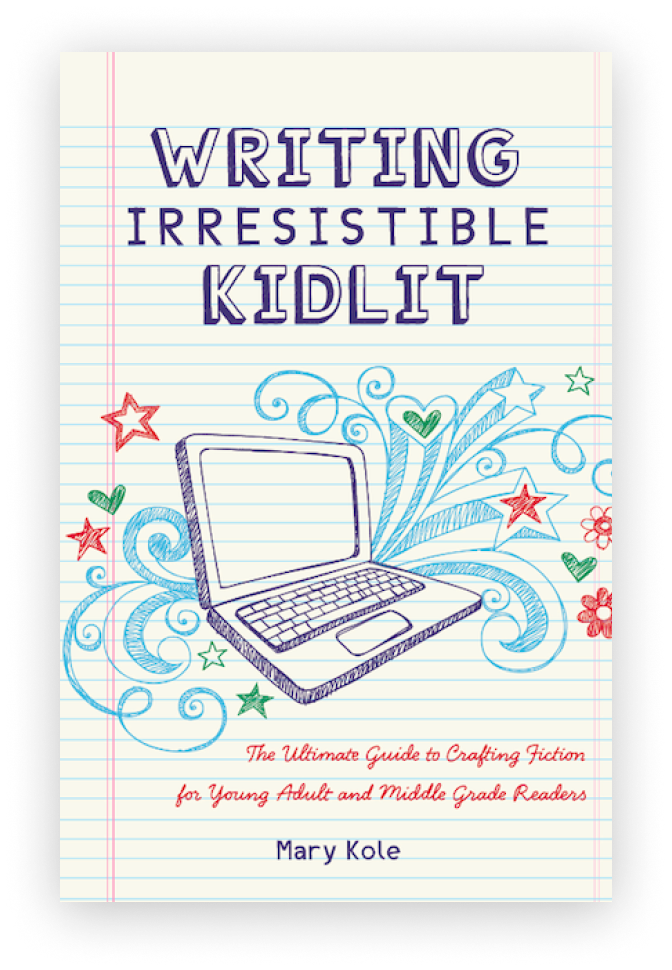Getting and Keeping
Reader Attention
By Mary Kole
Mary Kole is a former literary agent, freelance editor, writing teacher, author of Writing Irresistible Kidlit, and IP developer for major publishers, with over a decade in the publishing industry.
One of the most important things you need to do in your storytelling is to get, keep, and direct reader attention. A well-written novel should hook the reader from the very first page and never let go. Whether you’re writing a thriller, romance, or fantasy novel, directing reader attention is a vital writing skill to develop if you want to tell a good story. In this article, I’ll guide you through the different story elements that catch reader attention, how to manipulate reader attention with scene, description, and figurative language, how to direct reader attention for emotional impact using interiority, how to misdirect reader attention when writing mystery and thriller projects, and common mistakes writers make when manipulating reader attention (in a good way!). So let’s dive in!
Story Elements That Grab Reader Attention
When it comes to directing reader attention in your novel, the story’s first chapter is crucial. Introduce your protagonist with a strong emotional hook, present the premise, and include stakes by creating a problem that the reader immediately cares about. Make the conflict big enough that the reader wants to see how the conflict resolves itself. Typically, this kind of story hook is framed around a strong opening sentence or paragraph.
It's important also to develop well-drawn and interesting characters. Give your readers a reason to care about the lives of your protagonist, whether they have relatable flaws, are driven to achieve a character objective, or are hiding a deep character need. Develop your main character’s backstory and motivation and integrate these deeply human elements into the plot organically.
Manipulating Reader Attention with Scene and Description
Another way to direct your reader's attention is through evocative description, literary techniques, and writing imagery. A well-described setting can set the mood for the story and immerse the reader in the narrative arc. Use vivid details that give the reader a sensory experience, whether it's the sound of leaves rustling or the aroma of freshly baked bread.
Use figurative language to enhance your prose and direct the reader's attention to specific aspects of your story. Metaphor, simile, objective correlative, and personification can heighten your description and writing style. It is crucial, though, to use these tools wisely. Avoid cliches and overuse of metaphors and similes that will break the “fictive dream,” or the sense of immersion that your readers will ideally feel.
Directing Reader Attention for Maximum Emotional Impact
The emotional journey of your novel depends on your ability to direct reader attention towards the right emotions at the right moments. Increase the dramatic tension of the plot by building up suspense and using foreshadowing. Give your readers an emotional attachment to your characters, so any sadness or happiness will resonate deeply, especially when characters with opposing objectives get into scene together.
To achieve this, take your time to unfold your story and build up to key emotional moments. Use moments of introspection to explore your characters' feelings and mental state with the tool of interiority, and let your readers into their worlds. Consider your point of view choices and get as close to your characters as you can within the framework of your narrative. First person point of view is considered the most immediate, while omniscient third can be the most distant. What is the effect you’re going for with your writing style and genre?
Misdirecting Reader Attention for Thrillers and Mysteries
In mysteries and thrillers, directing reader attention quite often revolves around misdirection. The writer wants the readers to think in a particular direction, while secretly drawing them to another. Red herrings, cliffhangers, and plot twists play crucial roles in these genres, and it’s important to use them cleverly and organically. By building all of these elements into the story, then pulling on various threads, you can really play with reader attention without randomly springing story elements on your audience.
A misdirection can be a subtle misunderstanding or a small white lie from a supporting character that the reader assumes to be true, but which is debunked. These inconsistencies can also lay the groundwork for an unreliable narrator or a complicated backstory that leads to multiple plausible scenarios. Make sure, though, that your readers don't feel cheated by the misdirection. A well-written story always needs to make sense and to bring readers to a satisfying resolution.
Directing reader attention is essential to keeping your readers engaged and invested in your novel. It’s about tapping into the reader’s imagination, giving them deep and complex characters, creating detailed and mesmerizing settings, and playing with their emotions. It’s not always easy, but with these tips, you will be well on your way to creating a captivating story that readers will not be able to put down. Remember, each genre has its own nuances, so always focus on genre expectations. Keep perfecting your craft of storytelling, and soon enough, you will have a lot of reader attention to play with.

Click here to purchase Writing Irresistible Kidlit, my book on fiction craft for MG and YA novels, out from Writer's Digest Books. This will show you my writing craft philosophy and give you lots of valuable advice, including tips for the novel revision process and self-editing. There are over 35 example novels cited and discussed throughout. It’s a valuable resource for any writer’s toolkit.
Click here to purchase Irresistible Query Letters, my book on query letters, including over forty examples with comprehensive notes on each one. There’s a ton of submission advice, best practices, and insider information in these pages, and you’ll really enjoy seeing what other writers are doing in the slush.




